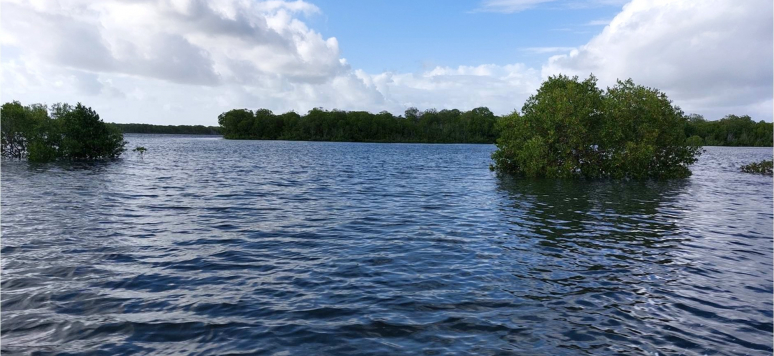Etudes de l'Ifri - Cross-border Dynamics in Terrorist Mobility and Infiltration along the East African Coastlines Ifri Studies, Ifri, March 2024

This paper looks at how terrorism has thrived in the East African region, the evolving nature of criminality and terrorism, and the crime-terror nexus in the coastal and maritime areas of East Africa. The emphasis of the analysis is on the Kenyan coastal regions with a focus on three counties, namely, Kwale, Kilifi, and Lamu.
East African countries are among the 20 countries most impacted by terror threats as a result of state fragility, the prevalence of armed conflicts, underdevelopment, and the growth of extremism.[1] Terrorist networks have extensively exploited the maritime domain of the Indian Ocean. Transnational naval crimes, including maritime terrorism, piracy, human trafficking, smuggling of illicit goods, and Illegal, Unreported, and Unregulated (IUU) fishing, reveal the ugly facets of crime flows affecting the blue economies.[2] Terrorist groups on the East African Coast, such as Al-Shabaab in Puntland, Somalia and Islamic State in Mozambique (ISM),[3] are increasingly visible at sea due to poor maritime law enforcement in East Africa.[4]
Coastlines in the East African region have traditionally been viewed as potentially vulnerable sites concerning illegal drugs, arms, and human trafficking, as imagined by states and compounded by heightened fears in the global war on terrorism era.[5] Securing the maritime coastlines is pivotal for governments in the East African region, such as those of Somalia, Kenya, Tanzania, and Mozambique, as they are considered permeable to terrorist groups, traffickers, and smugglers alike.[6] Nevertheless, the need to study coastlines in maritime border areas to understand the current crime-terror nexus along the East African Coast as a site for terrorist activities[7] is underemphasized in the East African counterterrorism (CT) literature. Difficulties in studying the crime-terror nexus in the coastlines have been compounded by the fact that it has been problematic to distinguish crime activities from terrorist activities[8] as well as its social embeddedness in the local communities.[9]
[1]. T. Omenma and M. Onyango, “African Union Counterterrorism Frameworks and Implementation Trends among Member States of the East African Community”, India Quarterly: A Journal of International Affairs, Vol. 76, No 1, March 2020, pp. 103-119.
[2]. “All Economic Activities Related to Oceans, Seas and Coasts. It Covers a Wide Range of Interlinked Established and Emerging Sectors”, Definition as provided by the European Commission, available at: www.un.org [1].
[3]. D. Ginga, “Maritime Insecurity in Sub-Saharan Africa and Its Effects in the Economy of States”, Austral. Brazilian Journal of Strategy & International Relations, Vol. 9, No. 18, 2020, pp. 196-218; “Stemming the Insurrection in Mozambique’s Cabo Delgado”, Report No. 303, International Crisis Group, June 2021, available at: www.crisisgroup.org [2].
[4]. I. Zyl and T. Lycan, “East African Terror Groups are exploiting the seas: Analysis”, Eurasia Review, October 16, 2020, available at: www.eurasiareview.com [3].
[5]. “Responding to Potential Emerging Maritime Threat from IS in the Indian Ocean”, UNODC, 2020, available at: www.unodc.org [4]; A. Rajput, “Maritime Security and Threat of a Terrorist Attack” Pace International Law Review, Vol. 34, No. 2, 2022, available at: https://doi.org [5].
[6]. N. Avdan, “Visas and Walls: Border Security in the Age of Terrorism”, Philadelphia: University of Pennsylvania Press, 2019; J. A. Winterdyk and K. W. Sundberg, “Border Security in the Al-Qaeda Era”, Boca Raton: CRC Press, 2010.
[7]. S. Ginsburg, “Countering Terrorist Mobility: Shaping an Operational Strategy”, Report Migration Policy Institute, February 2006.
[8]. F. S. Perry, T. G. Litchtenwald and P. M. Mackenzie, “Evil Twins: The Crime-Terror Nexus”, Forensic Examine, Vol. 18, No. 4, 2009, pp. 16-29.
[9]. H. Van de Bunt and D. Zaitch, “The Social Embeddedness of Organized Crime”, in: L. Paoli (ed.), The Oxford Handbook of Organized Crime, Oxford: Oxford University Press, 2014.
